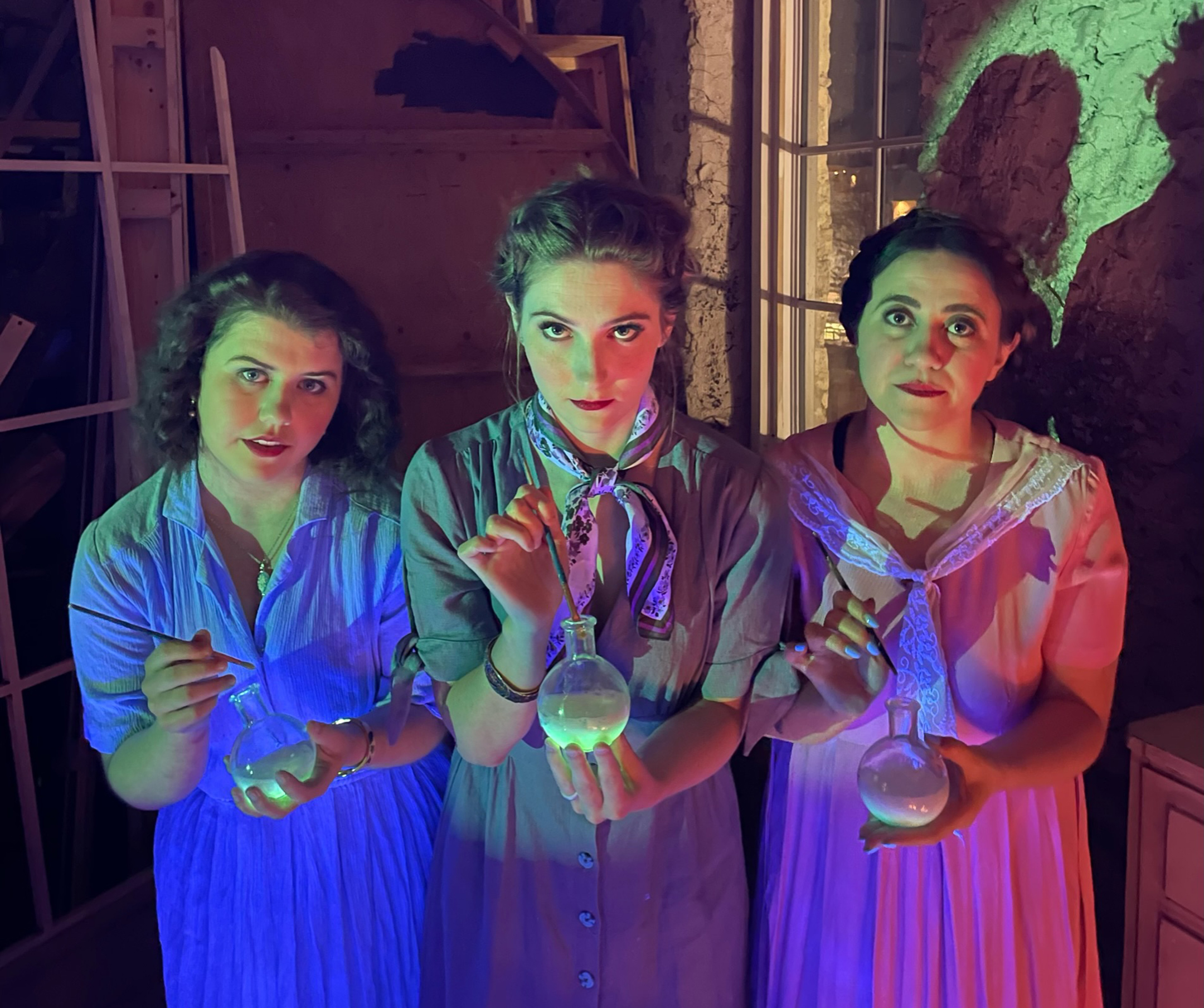ELORA – Based on a true story, Radium Girls will be coming to the Fergus Grand Theatre for opening night on Feb. 9 at 8pm and will be running until Feb. 18.
“We’re all just really excited about the play,” said Laura Faber, producer with Elora Community Theatre.
This is Faber’s first time producing a play, and the team has been rehearsing since October.
Radium Girls has been constructed by an all-female production team.
“It didn’t happen on purpose. It just happened that way naturally,” Faber explained. “Once we realized [we were going] that direction… we started to lean into that and we found we just started to ask for more young women who would want to be involved.
“We decided that it was a really good opportunity for us to raise their voices and support them.”
The play will be presented in collaboration with Dance and Heart, a local dance company in Elora run by Norah Wardell, the choreographer and stage manager for Radium Girls.
Costumes are being done by local vintage clothing and antiques dealer Sarah Clark.
The director is Catherine Johnston, a retired drama school teacher who is also doing technical design.
About the play
In 1926, radium is a cure-all and luminous watches were “all the rage.”
Grace Fryer was an American dial painter from the City of Orange, New Jersey who worked alongside some 70 women and girls at United States Radium Corporation.
Back in the 1920s, watch dial painters like Fryer painted with glow-in-the-dark paint that was laced with radium – a radioactive, poisonous chemical element.
“This paint and this process was made really, for the war so that you could see flight panels at night and so the soldiers could see their watches at night and coordinate things,” said Faber.
“It was a really big step in our military.”
As time went on, the radioactive paint kept being used for watches. Girls working at the radium factory were known as the “ghost girls” because while flappers and dancing became more popular in the 1920s, the girls’ dresses would glow in the dark when they would go dancing after work.
However, many girls began falling ill and dying. Jaw poisoning in the factory was common from licking paint brushes to get a sharper tip on the brush.
Radium Girls traces the effort of Fryer, a dying dial painter who fights against the Radium Corporation as her friends turn to ghosts around her.
Faber takes a twist from the original Radium Girls play, and when a watch painter dies, they become a ghost to emphasize that “ghost girl” nickname.
“She actually stays on stage and she’s there watching her friends and you can see her interact, even after they’re gone, which is not in the script. But we just wanted to add that as an extra element to it,” Faber explained.
Nobel Peace Prize
The first female Nobel Peace Prize winner, Marie Curie, was a Polish-French physicist and chemist.
While studying uranium’s rays, she discovered new elements – polonium and radium – and coined the “radio-active” term to describe them.
Faber told the Advertiser that Curie’s discovery led to the making of the radium paint that killed these women.
“It’s like, ironic in a way,” she stated. “She was a real person and she advocated for radium to treat cancers.”
After the Second World War, it became possible to create man-made radioactive elements, radioisotopes, in nuclear reactors instead of isolating radium from uranium ore.
Faber explained the “ghost girls” are still glowing to this day, “which is quite a visual.”
Tickets
If you are interested in seeing Radium Girls at the Fergus Grand Theatre, visit linktr.ee/radiumgirls2024.
Tickets can also be found at centrewellington.ca by clicking “purchase tickets” then “Radium Girls”.
The show runs from Feb. 9 to 18, with show times at 8pm on Fridays, 2 and 8pm Saturdays and 2pm Sundays



